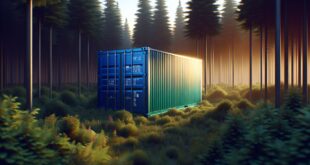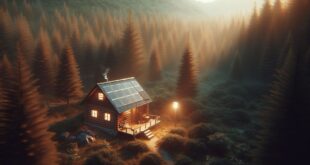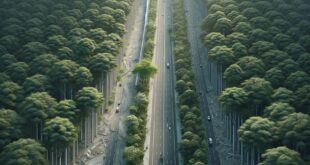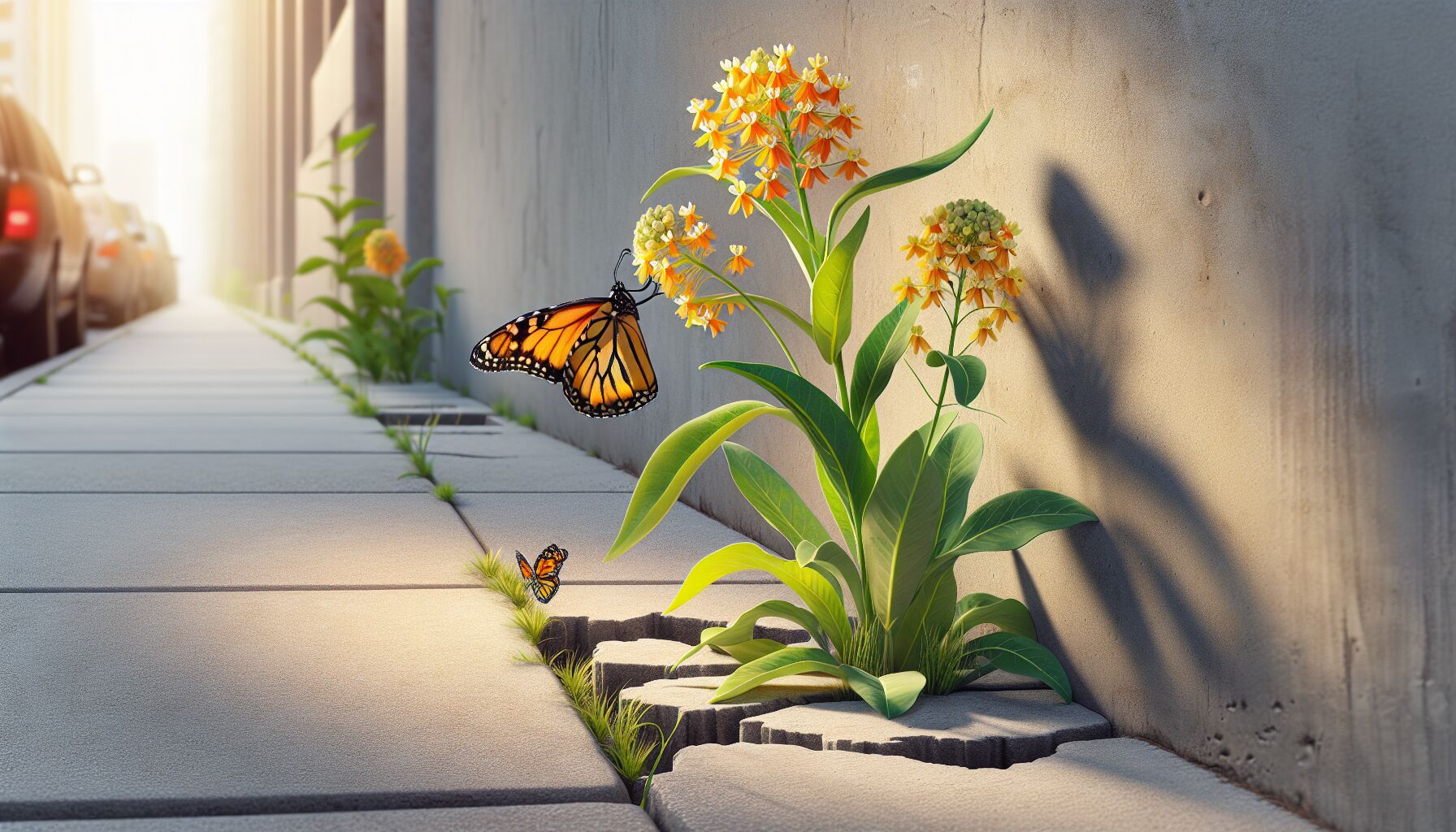 Ask anyone who’s tried to grow lavender in clay-packed suburb soil or keep boxwoods alive under blazing city heat—and they’ll tell you—traditional landscaping doesn’t often harmonize with the land itself. That’s where native plants come in. They’re not just botanical alternatives; they’re deeply rooted answers to a living challenge. When you plant native, you’re working with the story of the land, not against it.
Ask anyone who’s tried to grow lavender in clay-packed suburb soil or keep boxwoods alive under blazing city heat—and they’ll tell you—traditional landscaping doesn’t often harmonize with the land itself. That’s where native plants come in. They’re not just botanical alternatives; they’re deeply rooted answers to a living challenge. When you plant native, you’re working with the story of the land, not against it.
Let’s be clear: native plants aren’t just survivors. They’re relationship builders. These species evolved in tandem with local pollinators, birds, fungi, and soil microbes. Imagine a slow dance choreographed over thousands of years—roots weaving into soil that remembers every season. That quiet reciprocity is the backbone of healthy ecosystems, even in the middle of concrete grids.
Urban biodiversity depends on more than park pigeons and the occasional squirrel. Without native flora, cities become biological deserts. But swap in goldenrod, milkweed, or wild bergamot, and suddenly butterflies stop by. Bees return. Bats start zipping through twilight skies. It’s not romanticism—it’s biology. You restore a habitat, life comes back. And quite fast, too.
There’s also a practical side. Choose native species, and you’ll find:
- Lower maintenance costs – They don’t need pampering. Once established, most native plants need little to no watering, trimming, or fussing over. No fancy fertilizers. No battle against pests with harsh chemicals.
- Resilience to local weather – Whether it’s late frost or midday drought, these plants have seen it all before.
- Improved soil quality – Many natives interact beneficially with soil fungi (mycorrhizae), improving structure and fertility over time.
Plus, they’re stunning. Who decided lawn monocultures were the aesthetic standard, anyway? There’s quiet elegance in a feathered bluestem, joy in the dizzy zigzag of prairie coneflower. Even in sidewalk planters, native beauty interrupts asphalt fatigue.
There’s something deeper happening, too. When we reintroduce native plants into urban spaces, we’re honoring a web that’s hard to see but easy to feel. As Wendell Berry wrote,
“The Earth is what we all have in common.”
Planting a native shrub isn’t just about beautifying a block—it’s an act of reconnection. A reckoning with place. It roots us in responsibility.
And that matters more than we often admit. Because ecosystems don’t heal through abstractions. They regenerate through specific, local choices. Through actions that might seem small on the surface—like tucking wild ginger into the corner of a community garden—but ripple wide in the ecological memory.
When neighbors start noticing monarch butterflies fluttering through alleys or finches nibbling native seed heads at the edge of a playground, wonder becomes contagious. Children see colors they’ve never seen. Families linger longer on walks. That’s not sentiment—it’s the slow groundwork of community resilience built through nature’s return.
So yeah, there are metrics. Reduced water use. Higher insect diversity. Lowered urban heat. You can check the science at places like NCBI or U.S. Forest Service Native Plant Program. But numbers don’t carry the scent of wild mint in morning air, or the sound of crickets returning to back alleys. And sometimes, it’s those things—the old, flickering rhythm reappearing—that remind us: it’s not too late to grow with the land, even here.
Environmental impact and sustainability
When we talk about sustainability, we’re not just talking about better gas mileage or swapping out plastic bags—we’re talking about systems that endure, quietly and effectively, without constant input or intervention. In that spirit, native plants are more than a landscaping choice; they’re living systems that stabilize and revive. They don’t just coexist—they recalibrate the space around them. Like a well-set bone, they let the whole body heal.
Let me explain. Native plants operate on natural efficiencies honed over millennia. Their root systems run deeper—literally—that means they hold topsoil in place better than imported ornamentals ever could. Soil erosion, which doesn’t sound sexy until your sidewalk starts cracking and storm drains clog, is deeply mitigated by native plant installations. And when the soil is stable, water infiltration improves, reducing runoff—which means fewer pollutants heading to our waterways. The EPA confirms this in multiple studies—landscapes incorporating native vegetation require significantly less irrigation while helping filter toxins before they reach stormwater systems (EPA Green Infrastructure).
Now picture hundreds of disconnected lawn plots versus a network of gardens using goldenrod, red chokeberry, and butterfly weed. The latter isn’t just more colorful—it’s infrastructural. It supports ecosystem health even in fragmented urban grids. Each patch contributes to a distributed sponge that absorbs rain, buffers flood zones, and softens heat.
Urban heat islands—those sweltering city pockets that stay brutally hot even after sunset—are also cooled more effectively by native plants versus conventional grass or concrete. Their structural diversity (taller stems, denser leaves, higher evapotranspiration rates) insulates against extreme temperature swings. According to research published by the National Wildlife Federation, densely planted native gardens can reduce surrounding summer temperatures by up to 9°F. That’s not some abstract climate benefit—that’s the difference between a usable backyard and another air-conditioned night indoors.
It’s worth pausing here. Not because the facts get boring, but because this connection to place—this capacity for regeneration, even in the shadow of steel and glass—is a kind of redemption. When we shift landscaping from vanity to viability, we honor something older than cities. We honor the quiet agreements between species and season. And there’s humility in that. A humble garden may do more to fight climate chaos than any trending hashtag.
Of course, fewer chemicals is half the story. No one wants to admit they’re dousing their backyard in nerve agents, but common pesticides—glyphosate, neonicotinoids—still dominate many city green spaces. Native plants let us step away from that toxin-heavy loop. The same pollinators that thrive on these plants also keep invasive pests in check. It’s not magic—it’s restored balance. A yard thick with wild columbine or prairie dropseed invites natural predators. Fewer aphids, fewer chemicals, fewer downstream effects.
And that holds economic weight, too. City budgets strained by stormwater damage, pollinator decline, or public health expenses tied to poor air quality aren’t going to be solved with more concrete. But layered native landscapes, integrated into schoolyards, library commons, bus medians—those can change outcomes. They seed resilience. The U.S. Forest Service has echoed this: incorporating native flora into urban design not only boosts carbon sequestration but improves long-term city sustainability (USFS Urban Forestry Research).
Let’s be real—this isn’t a silver bullet. Native plants aren’t going to erase decades of ecological damage with a magic flourish. But they start the process, like breathing deeper after years of shallow breaths. They remind us to slow down, to notice, and to restore not just the land—but also the narrative.
As Aldo Leopold once said:
“A thing is right when it tends to preserve the integrity, stability and beauty of the biotic community.”
That’s the thing about urban biodiversity. It sounds like an academic term, but it’s deeply human. A biodiverse city is one that cares for breath, balance, motion. It’s a place where fungi thread unseen alliances beneath our feet, and birdsongs echo between trolley wires and treetops.
You don’t have to be a professional ecologist to care. We are, all of us, in conversation with the land—whether we’re aware of it or not. Every time we choose native over imported shrubs… every time we let clover grow instead of spraying it out… every time we ask not just what looks good, but what belongs here—we participate in something sacred and stabilizing.
Honestly? That’s sustainability in its most honest form: showing up, year after year, with species that know how to stay.
Design strategies for incorporating native species
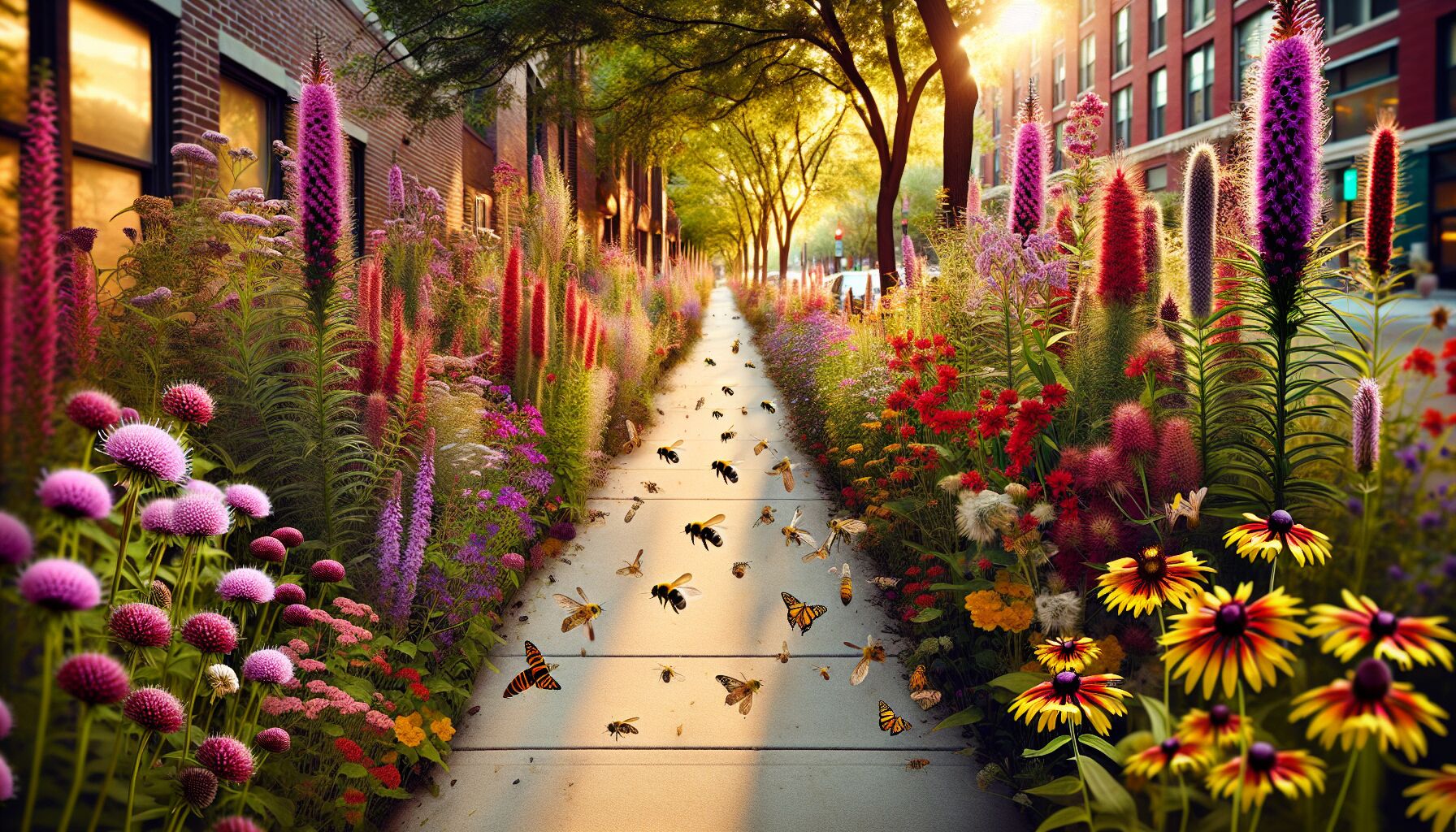 There’s a subtle art to working with native plants—not slapping down a few black-eyed Susans and calling it a day, but designing with context, purpose, and a good dose of humility. In cities especially, where space is fragmented and soil can be as lifeless as drywall, thoughtful design turns static plots into living systems. And no, it doesn’t require a fleet of landscaping trucks or a degree in ecology. It starts by recognizing that every square foot of land—sidewalk edge, traffic circle, front yard—has potential beneath its surface.
There’s a subtle art to working with native plants—not slapping down a few black-eyed Susans and calling it a day, but designing with context, purpose, and a good dose of humility. In cities especially, where space is fragmented and soil can be as lifeless as drywall, thoughtful design turns static plots into living systems. And no, it doesn’t require a fleet of landscaping trucks or a degree in ecology. It starts by recognizing that every square foot of land—sidewalk edge, traffic circle, front yard—has potential beneath its surface.
Let’s start practical. Before shovels hit the dirt, take literal stock of the site:
- Sunlight patterns – Track them over a few days. One side of your building might get just enough morning light for woodland natives like bloodroot or Jacob’s ladder.
- Soil conditions – Compact, sandy, alkaline? Local extension offices provide affordable soil tests (try National Institute of Food and Agriculture). You don’t need a lab coat—just curiosity and follow-through.
- Water flow – Observe puddles after rain. That’s where you tuck in Joe-Pye weed or swamp milkweed—plants that thrive where most others would rot.
Native planting isn’t plug-and-play. It’s more like building a neighborhood: you consider who lives there, what they need, how they get along. Think in layers—tall canopy natives like serviceberry or hackberry provide structure; midstory perennials like bee balm bring pollinators; groundcovers like wild strawberry or creeping phlox suppress weeds and retain moisture. This multi-tiered approach mimics natural ecosystems—and it strengthens ecosystem health by ensuring habitat diversity.
Here’s where your creativity meets stewardship. Cities aren’t prairies. But that doesn’t mean you can’t echo the language of wild systems. Turn a narrow curb strip into a pollinator corridor. Scatter liatris and sneezeweed between sidewalk cracks. Use native shrubs like bayberry or viburnum for privacy screens that feed birds, not just block views.
And if you’re limited to containers or rooftop decks? No problem. Even potted natives like little bluestem, mountain mint, or butterfly weed still contribute to urban biodiversity. They’re not filler—they’re function. Migration pathways for monarchs don’t require sprawling backyards. Just enough nectar. Just enough time.
You know what trips people up? They think design means symmetry. But native plantings rarely conform to clean corporate palettes. They grow how they want to grow—sometimes lanky, sometimes wild. That’s not mess; that’s character. A garden that flickers and fidgets with the seasons holds more life than one trimmed into sterile perfection.
Seasonality plays a subtle hand, too. Instead of ripping out “dead” gardens each fall, consider leaving seed heads and hollow stems through winter. It feeds overwintering birds and gives shelter to beneficial insects. Plus, frost over goldenrod? Pure poetry. Not to get too mystical, but these parts of the cycle—weeds turning to seed, stems breaking down into humus—they mirror the spiritual rhythms we often rush past. Destruction as fertility. Stillness as preparation.
To bring clarity to design, simple principles help:
1. Group by habitat – Don’t scatter plants based on sale racks. Stick with species that naturally coexist.
2. Think function before form – Prioritize plants that serve a role: erosion control, pollinator support, shade buffer.
3. Embrace imperfection – Let that golden aster lean a little. Let the milkweed wander.
4. Label and invite connection – Small signs or QR codes linking to local native plant info (like resources from the Lady Bird Johnson Wildflower Center) turn your front yard into a learning space.
Community gardens, schools, churches, even corporate campuses can embody this ethos. But here’s the thing—it works best when it feels local, not imposed. One-size-fits-all designs usually fit no one. Work within regional guides specific to your ecoregion. What’s native in New Mexico won’t suit upstate New York. Luckily, plenty of state native plant societies offer free PDFs, plant lists, and mapping tools.
And while you’re at it, decenter the lawn. Lawns are thirsty, fossil-fuel dependent monocultures that contribute nothing to ecosystem health. Replace portions with prairie plots or herbaceous borders. If full replacement feels daunting, start with a micro-meadow or a no-mow strip near the fence line. Step by step. Patch by patch.
There’s something almost subversive about it. You’re undoing decades of sterile landscaping norms. Replacing curated control with vibrant cooperation. As author and farmer Masanobu Fukuoka once shared:
“The ultimate goal of farming is not the growing of crops, but the cultivation and perfection of human beings.”
Same goes for gardens. It’s about stepping into reciprocity. Watching small systems thrive under your care and learning to recalibrate your expectations of beauty, order, and control.
So yes, design matters. Not for vanity’s sake, but because design dictates relationship. And when that relationship is built on native plants—on what wants to grow here, what has already learned to hold wind and sun—we don’t just restore gardens. We restore memory. And slowly, the city begins to hum again.
 DS Haven In Light Of Things
DS Haven In Light Of Things
